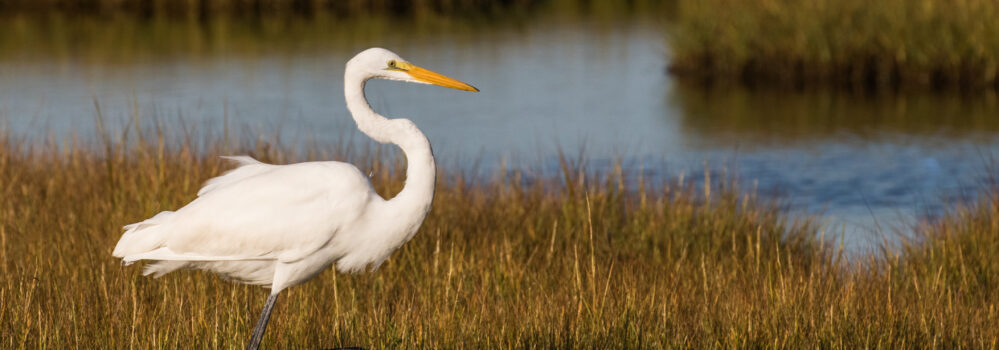
Five Trends in Coastal Resilience
Insights from the Restore America’s Estuaries 2024 Summit
Elizabeth Nicoletti, Founder, The Sea Life Group
Elizabeth Nicoletti Sheehy began her career analyzing and structuring climate investments in financial markets. She channeled her interest in the environment from the projects to the podium — taking on roles as public affairs advisor, media manager and executive speechwriter on global stages from the United Nations to Davos.
October 9, 2024 – This week over a thousand water and land restoration experts gathered outside Washington, DC, a few miles from the shores of the Chesapeake Bay, for the Restore America’s Estuaries Annual Summit. The theme, “Capitalizing on Our Coasts,” brought together diverse scientists, practitioners and policymakers to discuss tools and strategies for investing in our coastlines so that both habitats and economies thrive in sustainable ways. After five days of plenaries, panels and presentations, key themes began to emerge. High-level insights on advancing coastal resilience are as follows.
1. Invest in Partnerships
Success hinges on robust and inclusive partnerships. As Zac Cannizzo, Climate Coordinator at NOAA’s Office of Marine Sanctuaries pointed out, “You need the right people in the room, and you need diversity.”
Engaging a wide range of partners across public, private and non-profit sectors allow project teams to more deeply understand the potential setbacks and benefits of initiatives. Incorporating tribal voices, particularly in projects that descend from native practices, such as oyster shell recycling, can foster stronger, more meaningful engagements and honor ancestral tradition.
Experience shows that diverse partnerships that meet early and often enhance project resources, expertise and outcomes. For example, a Blue Carbon Inventory Project in Costa Rica exemplified this approach with bi-weekly meetings to align all partners around the project’s vision, activities and desired outcomes.
2. Adapt to Climate Change
“Climate change is a risk multiplier,” reminded Jainey Bavishi, Assistant Secretary of Commerce for Oceans and Atmosphere and Deputy NOAA Administrator. The urgency of rising sea levels, more intense storms and habitat loss was further underscored by weather events happening during the Summit. Hurricane Milton struck Florida on the fourth day, following Hurricane Helene’s devastating impacts on the Gulf Coast the previous week.
The Nature Conservancy highlighted the critical role of preserving marshes for climate change adaptation. Research indicates that investing in marshes can reduce wave heights by up to 90% – protecting both coastal communities and the economic activities that sustain them.
3. Leverage Innovative Technologies
The solutions of today can’t always solve the problems of tomorrow. The Summit showcased innovative technologies that are gathering data and supporting problem-solving in coastal restoration. For example, the US Army Corps of Engineers deploys Geospatial Information Systems (GIS) to gather aerial data on oyster reefs, while Maryland Department of Natural Resources utilizes sonar technology for bottom condition assessments. Underwater rovers are also effective monitoring changes in reef heights.
While the models are not quite refined, there is hope that current and legacy data can soon feed into predictive AI models, enhancing the efficiency and positive impact of future projects.
4. Focus on Meaningful Monitoring
Monitoring efforts should extend beyond basic outputs to include metrics that assess ecological performance. For example, there is a trend moving from how many acres of reef are restored to how well those reefs are functioning. In one case study, The Billion Oyster Project discussed testing for multiple outcomes, such as oyster health over time and community utilization of estuarine habitats.
Establishing progress dashboards that track various meaningful outcomes can enhance project accountability and facilitate information-sharing across partners.
5. Reach out and Communicate
Data collection and partner engagement generate vital information that can be shared with media, stakeholders and the broader community. Packaging findings in simple and actionable ways can have a demonstration effect on human behavior and feed back into the research cycle — benefiting future project designs and policy recommendations.
The Chesapeake Bay Foundation’s recent report, “Hope in a Half Shell,” is one such example of a communications product that sets out policy recommendations for the increased use of oyster reefs for shoreline protection. Communication and marketing are crucial lines in project budgets given how such activities can foster community support and participation for the long-term sustainability of coastal resilience.
Conclusion
These lessons offer broad guidance for any coastal resilience and restoration effort. They also remind us of our interdependence— with one another and with nature. Ecosystems do not exist in isolation; by building meaningful partnerships that take into account climate change, new technologies and impactful monitoring, we can strengthen our relationship with nature and enhance the restoration of America’s estuaries. The insights gained from this Summit can serve as a catalyst for ongoing innovation and outreach, ultimately leading to more resilient coastal communities.
